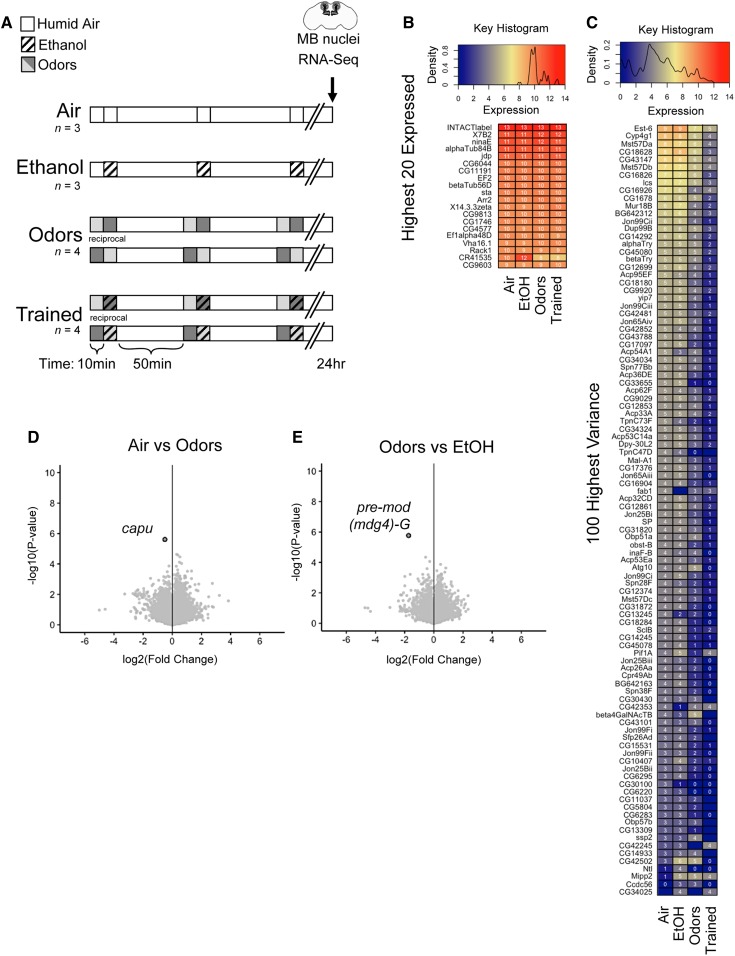Figure 1.
Exposure paradigms and differentially expressed genes in MB nuclei. (A) Paradigm depicting three spaced 10 min exposures of “Air”, “Ethanol”, “Odors”, or “Trained” (odor + ethanol) and flies killed 24 hr later. RNA for each biological replicate (n) was extracted from mushroom body nuclei isolated from ∼2000 male heads [Air: n = 3, Ethanol: n = 3, Odors: n = 4 (two reciprocals of opposite odor order), Trained: n = 4 (two reciprocals of opposite odor order)]. (B and C) Volcano plots showing fold change of gene expression [log2(fc+1)] compared to the inverse of statistical significance [−log10(P-value)] (dark outline, FDR < 0.05). Both (B) Air vs. Odors and (C) Odors vs. EtOH had one statistically significant differentially expressed gene. (D and E) Density histogram and normalized FPKM expression (blue, yellow, and red color representing relative levels) of (D) the 100 most variable genes—the squared deviation from the mean—and (E) the 20 highest expressed genes postfiltering of RNA-associated genes. FDR, false discovery rate.

